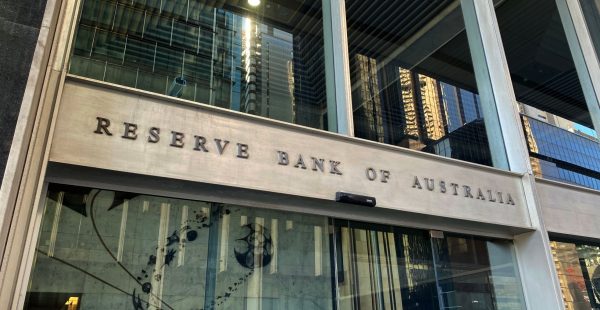Unchanging ASX at risk to private markets

Without bold reforms that balance governance with flexibility, the Australian Securities Exchange (ASX) risks ceding more of Australia’s growth story to private markets and offshore exchanges, according to the executive chairman of PrimaryMarkets, Jamie Green.
In doing so, Green noted that Australia’s initial public offering (IPO) market is one of ites deepest slumps in more than a decade with the slowdown driven by a potent mix of global turbulence, regulatory hurdles and competitive disadvantages against international exchanges.
He said it represented a perfect storm in circumstances where companies can now raise significant capital privately without the costs, delays and scrutiny that come with a public listing.
“In some cases, ASX rules are simply less founder-friendly than those in other major markets like the prohibition against dual‑class shares, making the ASX less attractive to founder‑led growth firms,” Green said.
“In the past, the ASX was a natural destination for early-stage companies in sectors like mining, tech and biotech. The model was straightforward with the mining companies listing early to fund exploration, while tech firms could spin out promising intellectual property into a listed vehicle to raise research and development capital. This process not only brought investors into high-growth ventures early but also made the ASX a recognised hub for speculative and growth-oriented plays.
However, over time, the ASX increased its scrutiny and toughened its criteria for admission. “This has been a slow tightening of the screws,” he said. “The smaller end of the market, mainly companies under $100 million market cap, has been hit the hardest. These are the firms that once relied on public markets for early growth funding. Now, they’re increasingly turning to private investor capital instead.”
Green said the numbers underscore the trend. In 2024, total IPO proceeds were just $2 billion, with a staggering $1.3 billion coming from a single listing. “When one company accounts for almost two-thirds of total IPO capital raised, you know the market has lost breadth,” Green said.
He said that faced with shrinking volumes, the ASX has rolled out some changes to its Listing Rules effective 30 May 2025, marking the first significant update since 2019. These revisions codify some long-standing practices, clarify the expectations for early-stage applicants and aim to streamline the listing process.
One of the more high-profile proposals is to cut the time between prospectus lodgement and listing from six weeks to just two which would allow earlier participation by investors.
On paper, the reform promises faster access to market but Green said two key restrictions limit its reach. “First, it only applies to companies with an expected market cap above $100 million. Second, it excludes any company with ASX-imposed escrow. These two conditions will exclude most early-stage mining and tech companies,” he noted. “Ironically, these are exactly the companies that would benefit most from a faster, less costly listing process.”
Green said another potentially transformative change under consideration is allowing dual-class share structures, aligning the ASX with exchanges in London, New York and Hong Kong. Under this model, different classes of shares carry different voting rights, often granting founders enhanced control while limiting public shareholders’ influence.
Proponents argue that this keeps visionary founders focused on long-term goals without the threat of hostile takeovers or short-term market pressures. Critics counter that it entrenches control, undermines governance and risks sidelining minority investors.
“The concept is controversial,” Green said. “While some listing candidates view dual‑class as a competitive differentiator, investors warn that it cements control in the hands of a few insiders, weakens accountability and elevates the risk of founder entrenchment.
“Proponents argue that dual-class shares allow visionary founders and charismatic leaders to pursue long-term objectives without succumbing to short-term market pressures. Past scandals involving strong outspoken founders both in Australia and overseas have heightened scepticism of this argument.”
Investor advocacy groups emphasise that Australia previously abandoned dual‑class shares. They urge that any re‑introduction must come with robust oversight, mandatory sunset clauses or voting thresholds and clear disclosure to protect non‑founder shareholders.
The US experience is interesting. Alphabet Inc., the parent company of Google, operates under a three-class share structure. Meta Platforms (formerly Facebook) has a dual-class share structure granting CEO Mark Zuckerberg outsized voting power. News Corp also operates under a dual-class share structure that gives the Murdoch family significant control over the company. Berkshire Hathaway, led by Warren Buffett, utilises a two-class share system with Class A shares possessing much greater voting power than Class B shares. By contrast, Tesla and Amazon do not have a dual-class share structures. Tesla and Amazon both have a single-class share structure, meaning each share carries equal voting rights.
For Green, the path forward is clear. “The ASX must introduce flexible, targeted reforms that recognise the realities of Australia’s issuer base.”











CFS should be focused on fixing Edge. Not distractions like this.
In my opinion: Another attempt by 'friends of the party' to muddy the work of professional advisers. Trustee should not…
Industry Fund Super Fund Trustees along with the corrupt Treasury are again trying to carve themselves out from competition, and…
Will end up making it impossible for licensed advisers to provide advice with them being replaced by the Union influenced…
Collective charging = Commissions Treasury corruptly trying to find ways to justify HIDDEN COMMISSIONS charged to every super fund member.…